Some weeks ago in Milan I had the pleasure to pay a visit to Mr. Aspesi, owner of the optical shop Aspesi 1910. His shop is in Via Festa del Perdono, in front of the Università Statale of Milan and has been in the city since 1910. It really looks like a cozy sitting room, last renovated in 1967 and refurbished in Luigi XVI style. A random visitor immediately sees that it is not an ordinary store: vintage chandeliers, comfortable armchairs and golden mirrors.
Alcune settimane fa ho avuto il piacere di far visita al signor Aspesi, titolare del l'ottica Aspesi 1910. Il negozio è in Via Festa del Perdono, di fronte all’Università Statale di Milano ed è in città dal 1910. E' un vero e proprio salottino, ristrutturato nel 1967 ed arredato in stile Luigi XVI. Da subito il visitatore capisce di non essere in un negozio qualunque: lampadari d’epoca, poltrone imbottite e specchi dorati.
Keep reading - Continua a leggere
Being acquaintance with the élite of the Italian business class, Mr. Aspesi loves talking about his job and the stories related to it. Showing me a print, he reminds when in the States, at the end of the ‘800, the opticians used to work also as clocksmiths, standing in their shops. Mr. Aspesi in Italy shook up this tendency: drawing inspiration from a Parisian jewelry store, he became the first optical store in Italy where customers could buy glasses staying seated. Right after, with his subtle sarcasm he will point out that this expedient helped giving more importance to the buying experience, but also increased the risk that the customer would remain for hours in the shop.
Conoscente di gran parte dell’elite imprenditoriale meneghina e non, il Sig. Aspesi è una persona che ama parlare del suo lavoro e degli aneddoti relativi a questo mondo. Mostrandomi una stampa datata mi racconta che negli Stati Uniti, verso la fine dell’800, l’ottico svolgeva anche il mestiere dell’orologiaio e si vendeva in piedi. Lui rivoluziona questa tendenza e, prendendo spunto da una gioielleria di Parigi, diventa il primo negozio di ottica in Italia in cui si vendono occhiali stando seduti. Preciserà poi, con la sottile ironia che lo contraddistingue, che da un lato questa trovata dava importanza all’esperienza d’acquisto, dall’altro alimentava il rischio che il cliente restasse ore nel negozio.
Mr. Aspesi is a treasure trove of interesting anecdotes, like the one about the first known depiction of a man wearing glasses, that dates back to 1350 and was found in the Besançon library in France (pictured below), or the one about the first sharpeners in the United States who used to sell also glasses, because the same tools were needed to sharpen knives and to grind the glasses. Moreover, the optical industry has always been linked to the cultural one: according to a recent research, the Vatican allegedly is the State with the highest number of people wearing glasses, that are the only distinctive sign among prelates and nuns.
Il Signor Aspesi è una miniera di ricordi ed aneddoti interessanti, come quello della prima raffigurazione conosciuta di un uomo con gli occhiali, ritrovata nella biblioteca di Besançon in Francia e risalente al 1350 (foto in basso) o la circostanza che i primi arrotini vendevano anche occhiali perché per affilare coltelli e molare occhiali si usavano gli stessi strumenti.Il mondo dell’ottica, inoltre, è sempre stato legato a quello della cultura: secondo un recente studio, infatti, il Vaticano sarebbe lo Stato con il più alto numero al mondo di persone con occhiali. E sono proprio gli occhiali l’unico segno distintivo tra prelati e suore.
Also the product itself has changed over the years. Initially conceived as a prothesis, just like a cane or a hearing device, the eyewear has slowly become a communication medium, with strong visual impact. Last but not least, the fashion phenomenon, with Giorgio Armani, who marked a division in the eyewear industry. Before the 80’s, the optician used to offer products he preferred; after Armani, he will be influenced by the marketing campaigns of the big brands, hence the customer will address what he has seen in the advertisements and the weight will shift from the offer to the demand.
Anche l’occhiale ha subito un’evoluzione nel corso degli anni. Inizialmente concepito come una protesi, al pari di un bastone o di un apparecchio acustico, col tempo è diventato un oggetto di comunicazione, dal forte impatto visivo. Last but not least, il fenomeno delle mode, con Giorgio Armani, che ha segnato uno spartiacque anche nel mondo dell’ottica, ci spiega. Prima degli anni 80, infatti, l’ottico proponeva i prodotti dei brand che preferiva, dopo Armani invece sarà condizionato dal marketing delle griffe, pertanto il consumatore vorrà ciò che ha visto in pubblicità e il peso dall’offerta si sposterà sulla domanda.
Lastly, the collaboration of Mr. Aspesi with Mr. Oliviero Toscani, famous publicist and renowned photographer, met through Mr. Elio Fiorucci, a common friend. Brightly coloured and joyous glasses, created by the skilled hands of a craftsman from Cadore, in Italy, that mix the creativity of Toscani with the more-than-ten-year retail experience of Aspesi.
Infine, la collaborazone con Oliviero Toscani, il celebre pubblicitario e fotografo di fama internazionale, conosciuto attraverso l’amico comune, Elio Fiorucci. Occhiali dai colori forti, più allegri, creati dalle sapienti mani di un artigiano del Cadore e che mescolano la creatività di Toscani con l’esperienza ultra decennale nel retail del Sig. Aspesi.
If you like what we are doing here, please consider following us on Facebook - Tumblr - Twitter - Instagram
Ph. Credits: Marco Di Donna







